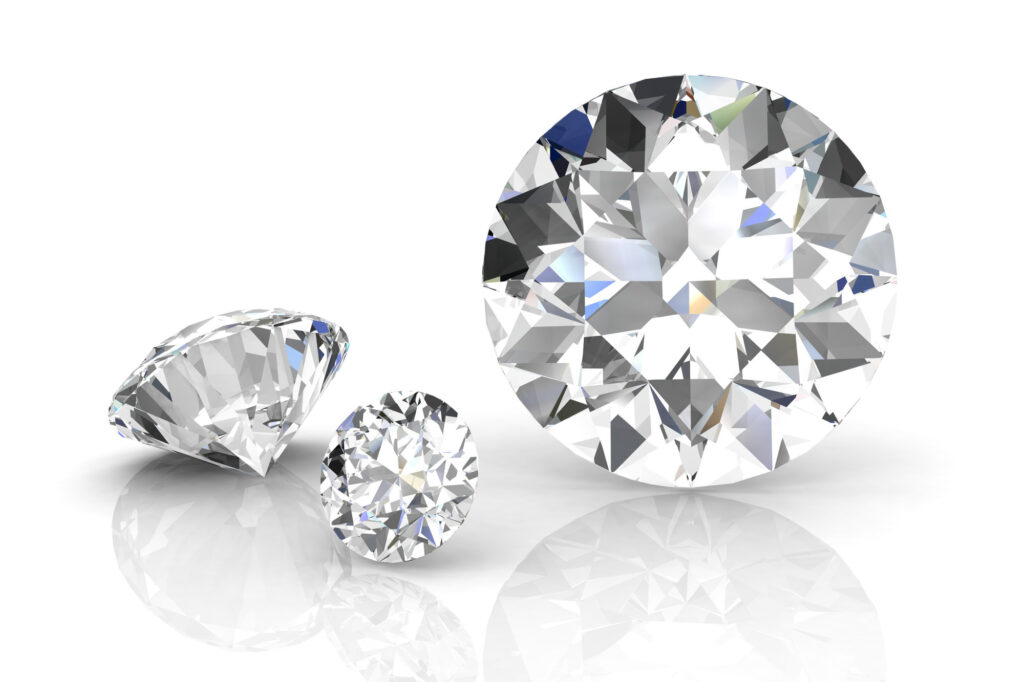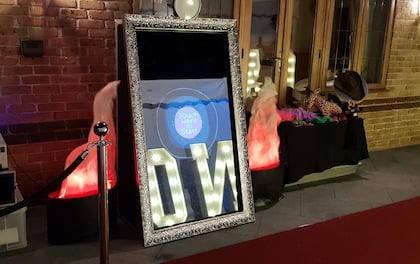

If you’re about to join 1.8 million other American couples in matrimony, there’s a lot to look forward to. One of the most exciting and invigorating parts of the wedding planning process is popping the question and proposing. To do this the right way, you’ll need a great ring.
Here, we’re going to help you figure out what kind of stone to integrate into your custom band. Read on to learn about diamond color and clarity so that you can choose the most brilliant diamond possible while staying within your budget.
The 4 C’s
There are 4 core things to consider when choosing a diamond. They are generally referred to as the 4 C’s.
The first is diamond cut, or the angling of a diamond’s facets to appropriately reflect light that hits the stone. The right cut brings sparkle and brilliance to the stone. This is generally regarded as the most important of the 4 C’s.
Carat weight is another of the 4 C’s. The weight of a diamond is measured in carats, so you’re determining how heavy the diamond will feel when set in the band. While this often corresponds to diamond size, it is not always related.
Diamond color is the hue of the diamond. Stones will range from a brilliant colorless white to a soft light yellow. The diamond color chart ranks the stones based on how much of a yellow tint they have.
Finally, clarity refers to whether or not the diamond has imperfections. While it’s possible to get a flawless diamond, most stones have some flaws. Clarity rates diamonds on how flawed they are so you can select the best quality stone possible when creating custom jewelry.
Today, we’re going to focus on diamond color and clarity.
The Basics of Diamond Color
White diamonds have a natural yellow tint. However, most people imagine crystal-clear diamonds when they think of traditional engagement rings. This is because many engagement rings use “colorless” diamonds that experts have optimized for jewelry.
The closer to being colorless a diamond is, there rarer it will be. This means that flawless-looking white diamonds tend to be more expensive than their yellowish counterparts.
To distinguish between different diamond hues, there is an industry-standard color grading scale. These colors range from D-Z. D diamonds are the whitest and most brilliant diamonds while Z stones have a pretty yellow tint.
You can get both lab-grown and natural diamonds with these tints.
D/E/F Diamonds
These diamonds are referred to as “colorless” and do not even have a small trace of yellow. Their radiant brilliance has been an engagement ring staple for generations. Because of their beauty, they generally are considered the top choice for engagement bands and other wedding jewelry.
The biggest drawback of these diamonds is their price. Because they’re so rare, D/E/F diamonds usually cost several hundred dollars. If you’re looking for a larger diamond or a multi-stone engagement band, you quickly could wind up with a hefty multi-thousand-dollar price tag.
Just make sure that you know your budget in advance. If you’re committed to getting the clearest possible diamond but have less money than you would like, consider a smaller stone or a G-J color diamond.
If you want a white-gold or sterling silver engagement band, a colorless diamond is the best way to go. There will be contrast, but the stone and the metal will not clash. White/silver bands will clash oddly with colored diamonds.
G/H/I/J Diamonds
These stones are referred to colloquially as “near colorless.” They may have extremely faint hints of color, but most people won’t notice them unless they look extremely closely.
Generally, G-J diamonds are considered one of the best wedding ring stone options. They look about the same as a colorless diamond but cost far less.
This means that you can get a larger stone for money. You also can indulge in more intricate ring designs with diamond-studded bands.
If you choose a yellow-gold or rose-gold setting for a G-J-colored ring, you’re even less likely to notice the extremely small color grade shift. The surrounding metal hue will negate the yellow undertones and it will be identical to a colorless diamond.
K/L/M Diamonds
K-M diamonds have a very faint yellow tint. It is generally noticeable to the untrained eye, but it looks like a slight sheen in an otherwise colorless diamond. No one could reasonably refer to the stone as yellow.
You can think of these stones simply as having warmer undertones. They look great when set in yellow-gold or rose-gold bands much like G-J color-grade diamonds. However, rather than making the color unnoticeable, these bands will bring out the best in their existing hue.
Note that color is also more visible in large diamonds. If you’re getting a small diamond under 1 carat, you might get by with a K-M diamond. Otherwise, those in previous color grade categories are usually better choices for engagement rings.
N/O/P/Q/R Diamonds
N-R color grades are very light yellow. Their hue is somewhat darker than the small twinge provided by K-M diamonds.
Usually, these diamonds are too heavily colored for engagement or wedding bands. They simply don’t have the traditional shine that newlywed couples are looking for.
However, you can get diamond jewelry in several different varieties. Rose gold line bracelets studded with diamonds will look amazing with colored stones. The warm hues of the yellow will look great with the faint yellow look of N-R-grade diamonds.
These stones also make fantastic earrings, especially studs.
S/T/U/V/W/X/Y/Z Diamonds
These are the lowest diamond grade and are pretty yellow. They are generally not a good choice for jewelry. The color is so intense that it directly impacts the stone’s appearance.
It also might give them a somewhat milky appearance. They will rank lower in clarity as well as in color.
All You Need to Know About Diamond Clarity
Speaking of diamond clarity, it’s important to take this consideration into account as well as diamond color.
Clarity assesses the surface of the stone for small imperfections. These imperfections often come in the form of blemishes. Blemishes are surface flaws on the diamond that may include scratching and chipping.
Inclusions, or internal defects within the diamond, are also assessed. These are usually less important since many inclusions are invisible to even a trained naked eye. These inclusions are called “eye clean” because they’re too small to see without professional magnification.
Because of this, they sometimes are called “internal characteristics” rather than flaws. They give the diamond character. Many people like inclusions; no one wants a heavily blemished diamond.
Flawless (FL) and Internally Flawless Diamonds
Flawless diamonds have no internal or external characteristics. They are literally perfect, which means that fewer than 0.5% of all diamonds fall into this category. In addition to being tough to find, they are extremely expensive because they are incredibly rare.
Internally flawless diamonds are similar to flawless ones. They are completely eye-clean. They may have some tiny blemishes if magnified under expert microscopes, but this means nothing.
IF diamonds don’t have any inclusions, giving them the status of being internally flawless. The grade is only lower than FL-grade stones because of microscopic surface characteristics.
Very, Very Slightly Included (VVS) and Very Slightly Included (VS) Diamonds
These diamonds are usually the best place to begin looking for engagement ring stones. They cost far less than FL-grade diamonds and look exactly the same. They’re usually the best-value diamonds.
It is difficult for experts to detect flaws in VVS and VS stones. This is even true at 10x magnification. No inclusions will ever be visible to the naked eye.
Choosing these stones lets you save money for your wedding and honeymoon at no real cost. Your partner is unlikely to tell the difference between these diamonds and their FL counterparts. In fact, it’s likely that you’ll only know the difference because of the information that you’ll get prior to purchasing your perfect diamond.
Slightly Included (SI) Diamonds
SI diamonds have inclusions that generally cannot be seen by the naked eye. Even experts will need to magnify them to make note of inclusions. However, they are almost always visible when magnified by 10.
There are two types of SI diamonds. SI1 stones have fewer inclusions that SI2 alternatives. Their inclusions are smaller and less extreme.
SI2 diamonds are still high-quality, but inclusions may be visible to the naked eye in some cases. This depends on the cut of the diamond and the location of the inclusion. You may only see it when light hits the stone in a very specific way.
Still, SI diamonds- especially SI1 diamonds- make for good engagement rings. This is especially true if you’re looking to set a smaller stone in the band. SI diamonds of lower carat weight are optimal.
Included Diamonds
Unlike SI diamonds and those above them on the clarity scale, included diamonds are generally not ideal for engagement rings. Their inclusions are extremely obvious to the naked eye. They impact beauty to the point that the diamond no longer looks great.
There are 3 grades of included diamonds I1, I2, and I3. I1 is the best of the included diamonds with obvious inclusions that are smaller. I3 diamonds have the most obvious flaws.
Some included diamonds also feature surface blemishes. These make the diamonds look rough, unpolished, and generally flawed.
How to Choose the Right Diamond
It’s best to consider the 4 C’s together when choosing your diamond. However, this is best done after choosing the band metal and color. You’ll be able to get the precise look you want if you know where your custom diamond will be set.
You also should first choose the cut of your diamond. This is one of the most noticeable things about your band. It gives it the visual appeal that you want and is the most important of the 4 C’s.
Decide whether you want a round, princess, emerald, or Asscher-cut diamond. If you want a different shape, that is also fine. Those are simply 4 of the most popular cuts.
Once you decide on the band color and diamond cut, it’s time to begin choosing your stone color.
Yellow-Gold Bands
If you’re setting your diamond in a yellow-gold band, K-M-grade diamonds are great for round cuts. The yellow of the band will be absorbed into the color of the diamond, so higher-grade stones will look yellowish anyway. It’s a waste of money to go above K.
Those who want princess/emerald/Asscher-cut diamonds in golden bands might prefer J-K stones. Other diamond shapes will require I-J-grade diamonds.
White Bands
For those who choose white gold/sterling silver/platinum bands, you’ll want to get an H-J-grade color for a round cut. Anything higher is wasteful since you’ll be paying for color features that the naked eye can’t detect.
Those who want princess/emerald/Asscher-cut diamonds will need G-I-grade stones. Buyers who want other cuts should consider F-H grades.
Side Stones and Halos
These stones are extremely tiny. You can choose G-I grades for round, princess, emerald, and Asscher cuts. There is no need to consider which of the 4 you prefer before choosing a color since they all require the same thing.
However, other diamond shapes will look best in F-H grades. This is true for both diamonds on the band and in the halo.
Start Buying a Diamond Today
Choosing the appropriate diamond color and clarity is a critical part of the jewelry-buying process. While there are many options to choose from, it’s important that you find the brightest and clearest diamond possible within your budget. Now that you know how to do that, it’s time to get started.
Finer Custom Jewelry is committed to helping you create the engagement band of your dreams. Our experts will help you determine which color and grade of diamond you need to make your custom piece shine. Contact us with any remaining questions that you have and begin the customization process today.





